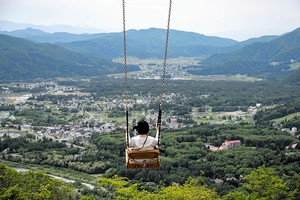By JUNKO YOSHIDA/ Senior Staff Writer
May 27, 2021 at 07:00 JST
An “underground” festival now under way traces the history of the modern Japanese dance form of “butoh” against the backdrop of the postwar period of rapid economic growth in Tokyo.
The Tokyo Real Underground festival, which runs until Aug. 15, comprises a photo exhibition and videos of butoh performances streamed online.
Butoh was founded by Tatsumi Hijikata before its principle was taken over by Kazuo Ohno, Akaji Maro and Ushio Amagatsu. The performing art has inspired the art scene across the world since the 1960s.
The word “underground” in the festival’s title refers not only to Tokyo’s underground spaces but also to an anti-commercial, experimental art movement known as “angura,” short for underground.
Characterized by performers who keep a low center of gravity and dance in slow motion, butoh presents values that run counter to Western arts dedicated to achieving sophistication, and serves as an axis of underground culture connecting a wide variety of genres.

The around 10 videos of butoh performances streamed online include: “A Body in Fukushima” from the “A Body in Places” series, in which Eiko Otake’s dancing conjures up images of Fukushima Prefecture in an underground space in Tokyo; and Takao Kawaguchi’s “About Kazuo Ohno,” which has been performed in 38 cities across the world since its first presentation in 2013.
As part of the festival, Ginza 1961, an exhibition featuring photos of the Tokyo district taken by William Klein in the early 1960s, is being held in an underground passage connecting Ginza and Higashi-Ginza subway stations until June 13.
For details, visit the official website at (http://www.tokyorealunderground.net/english/about.html).




















A peek through the music industry’s curtain at the producers who harnessed social media to help their idols go global.
A series based on diplomatic documents declassified by Japan’s Foreign Ministry
Here is a collection of first-hand accounts by “hibakusha” atomic bomb survivors.
Cooking experts, chefs and others involved in the field of food introduce their special recipes intertwined with their paths in life.
A series about Japanese-Americans and their memories of World War II